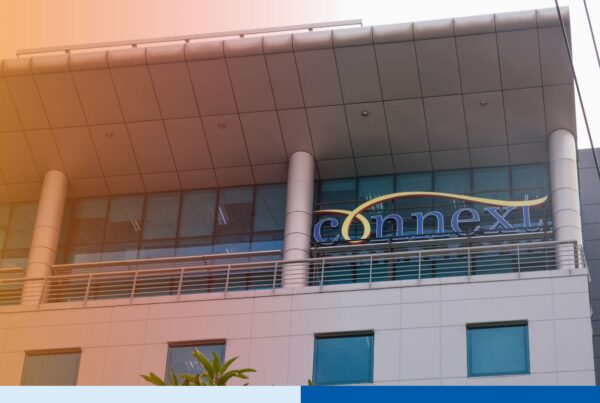Hiring offshore staff is becoming increasingly popular with companies in the United States. With a rise in remote work technology, a mindset shift amongst executives, and talented global employee pool, it simply makes sense for companies to hire offshore.
Where most companies hit their first snag is when looking at how exactly to hire offshore staff. For more insights on this process, check out our guide to offshore staffing.
This article aims to walk through some practical and basic steps for hiring offshore staff.
Step 1: Defining your ideal profile
The most important part when hiring offshore staff is defining your ideal employee profile. Experiences, education, and backgrounds are going to differ across geographies, so it is important to understand what type of person would be successful in the role you are looking for. For example, if you’re looking to hire offshore Node.js developers, understanding their skill sets and qualifications can be crucial to making the right decision.
The Philippines, for example, has a strong medical billing talent pool. Often we place medical billing specialists in non-healthcare roles because their background and experiences align well with the type of work that needs to be done. You may even want to create a specific job description and profile for each country you are looking in. If you want to use the same job description that you use in the United States, I recommend having someone ‘translate’ it into a profile that makes sense depending on the country you are looking to hire in. Our recruiters spend a lot of time doing this for clients. Taking the job description that they would use in the United States and translating it into a job title, description, and advertisements that will get us the most ideal candidates in the Philippines.
Step 2: Recruiting
There are many ways to go about recruiting offshore staff. At Connext, we have a 15-person recruiting team dedicated to finding highly talented offshore employees for clients. They understand the local market and work through channels like Indeed, LinkedIn, etc., to find local talent. This is a major reason why companies partner with vendors — to gain access to top-level talent without having to build a country-specific recruiting team. Discover more about our recruiting services.
That is not to say you can’t do the recruiting yourself, it will just take more time. There are plenty of online job boards and freelancer websites that will allow you to post your own job description and look through potential candidates. If you go this route, it will greatly benefit you to take the time to understand the market you are looking in so that you can more efficiently weed through candidates.

Step 3: Interviews
Interviews can be done the same way you would conduct interviews with a remote employee in the United States. We almost always have client interviews done over Zoom, Teams, or another similar platform. Generally our process is to screen the candidate resumes for general alignment, have an initial call with the candidate and our recruiting team to assess English proficiency, conduct operational interviews with an expert on that role in the same country, and lastly have the client in the United States interview for the final decision.
Step 4: Extending an Offer
Great, you have identified an offshore employee you would like to hire. Now what? First you have to decide how you are going to employee this person. Are you going to set up your own subsidiary? Are you going to work through a third party vendor? A lot of companies will even hire employees as independent contractors.
We would highly recommend either working through a third party business process outsourcing partner like Connext, or through an international employer of record service like Deel or Globalization partners. These companies exist to help you get it right. They manage the payroll, tax, compliance, benefits, and with companies like Connext, also help with recruiting, management, IT support, and facilities. There is often an associated fee, but it is almost always more efficient and effective than doing it yourself.
Hiring independent contractors is both time consuming and risky:
Risk for staff
Likely the IC’s are not registered as self-employed persons – violation of Philippines business law and associated penalties and sanctions
Likely the IC’s are not paying income tax in the Philippines – Philippines tax evasion and associated penalties
Risk for Company
There is no legal standing in the Philippines between company and the IC’s and thus no recourse
There may or may not W-8 Ben’s and agreements in place between company and the IC’s which is required for US tax compliance
Minimum compliance requirements
Each IC must register with applicable government agencies (process on next slide)
Pay taxes on receipts from clients
Agreements in place and W-8 BEN if contracts with offshore person/entities
Philippines IC rules are similar to the US – legally difficult to have managed IC’s working full time for one company.
Step 5: Onboarding
The final step once an employee is hired is onboarding. You have likely coordinated a start date and schedule and now you need to get them set up to work. That means getting them the right equipment, credentials on your systems, initial training guidance, and any other things they need to be successful. Send them the equipment you would like them to use, coordinate with our IT team to figure out how to set them up on your systems, and send them an overview of the company and tasks they will be doing. That is a great first step to setting up success for training and production for offshore staff.
Again, this can all be done on your own at the expense of your own time. Companies like Connext exist to help clients get all of these set up with minimal involvement and effort.
Conclusion
Hiring offshore staff is becoming normal for companies around the world. It can be done 100% on your own, but will likely take much more time and energy than if you work through a third party provider.
If you want to learn more about hiring offshore staff, get a free consultation with one of our experts and they can walk you through how we can support.









